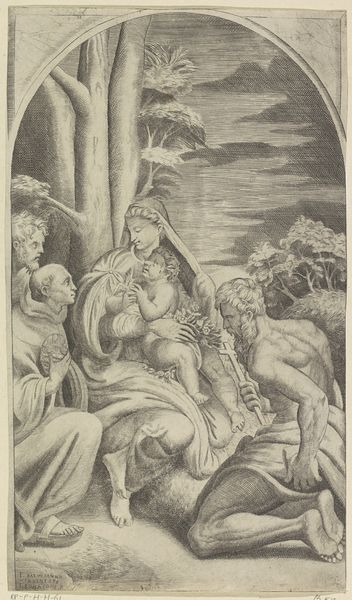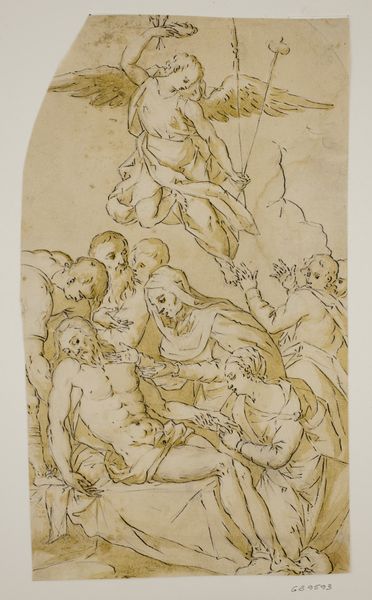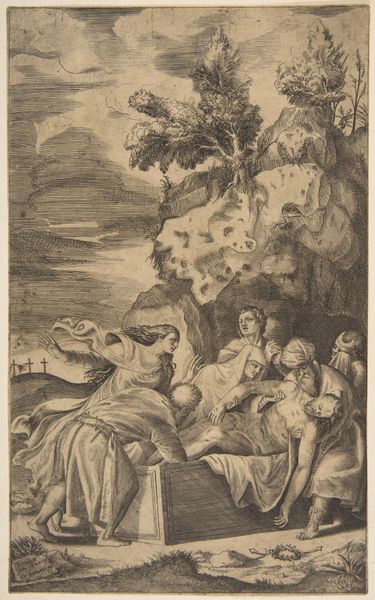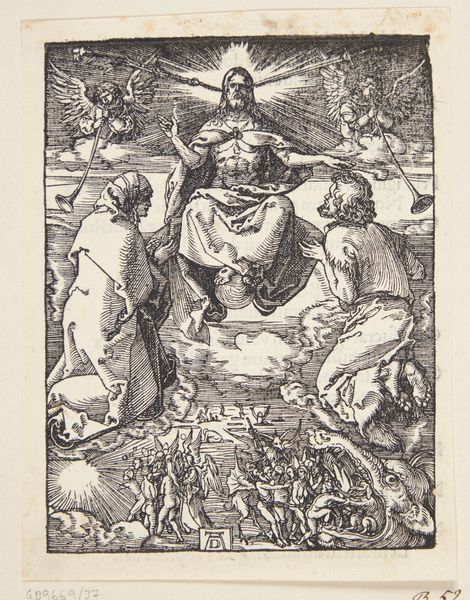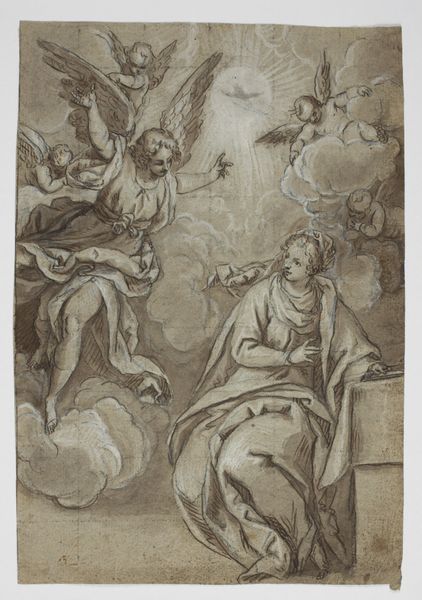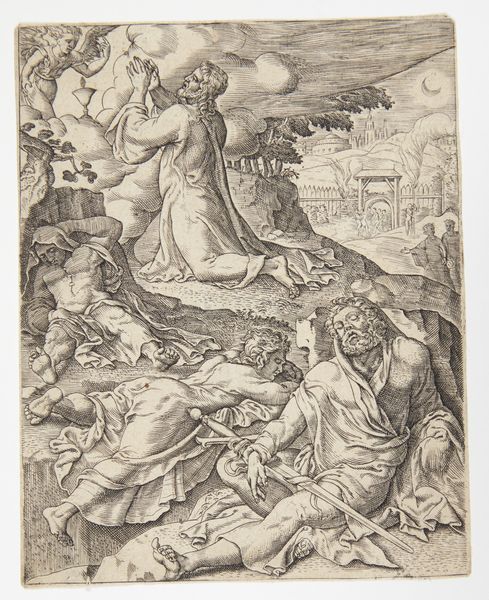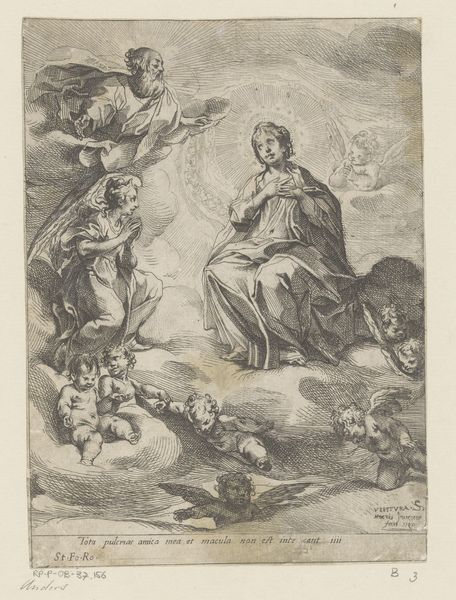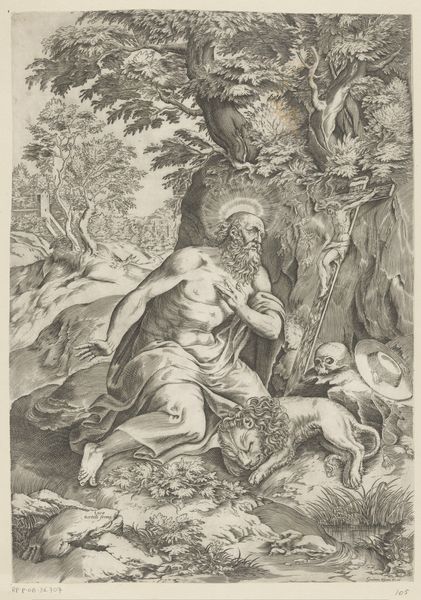
print, engraving
#
allegory
# print
#
figuration
#
history-painting
#
northern-renaissance
#
engraving
Dimensions: 301 mm (height) x 207 mm (width) (plademaal)
Editor: Here we have "Næstekærlighed," or "Charity", an engraving by Jan Saenredam, created around 1601. It feels very Renaissance-y to me, all graceful figures and allegorical symbolism. I'm curious, what do you see in this piece beyond the initial impression? Curator: It’s fascinating how Saenredam distills a complex concept like Charity into a single scene. For me, it's a potent reminder of the humanist ideals blossoming during that period. Notice the central figure, she embodies maternal love, practically overflowing with generosity. Are those cherubs crowning her with laurel wreaths? Editor: They certainly seem to be! Little flying messengers of... goodwill? Curator: Perhaps! The olive branch signifies peace, the rewards of acting from a place of love, wouldn't you say? And that direct gaze, almost pleading with the viewer. There’s a vulnerability there. Northern Renaissance art often combined religious undertones with more secular, worldly concerns. The engraving technique allows for so much detail; each line seems deliberate. Does the inscription at the bottom add anything for you? Editor: Good question, I think so: “On tote nihil est quippe me gratus amor." I don't know the latin, but that last word tells me "love" is certainly being emphasised. What feels unusual to me, seeing this image now, is how modern assumptions about child welfare have changed: do the naked children convey a certain defenselessness? Curator: Ah, an interesting perspective shift. Those nude cherubic figures, a staple in Renaissance art, take on new resonance for modern audiences who may question their innocence in the absence of protective garments. Food for thought indeed! Editor: This piece makes me think about how art really *is* a conversation, not just with the artist, but with everyone who views it across time. Curator: Precisely! And with ourselves. We come to art to be seen as much as to see. It makes one reflect.
Comments
No comments
Be the first to comment and join the conversation on the ultimate creative platform.

